Written by Bruce Kirchoff, Department of Biology, UNCG. Illustrations by Jon Wagner, East Multnomah Soil & Water Conservation District, Portland, OR. Edited by Simon Bakke.
Science Talk (#SciTalk19) is an annual two-day conference that brings together scientists and science communication professionals to improve scientific communication. I was there to talk about the work the University of North Carolina at Greensboro University Speaking Center is doing to improve scientific communication, and to promote this type of work at other universities. In the afternoon of the second day I met Jon Wagner, who was documenting the conference with drawings and agreed to co-author this review, as the illustrator.
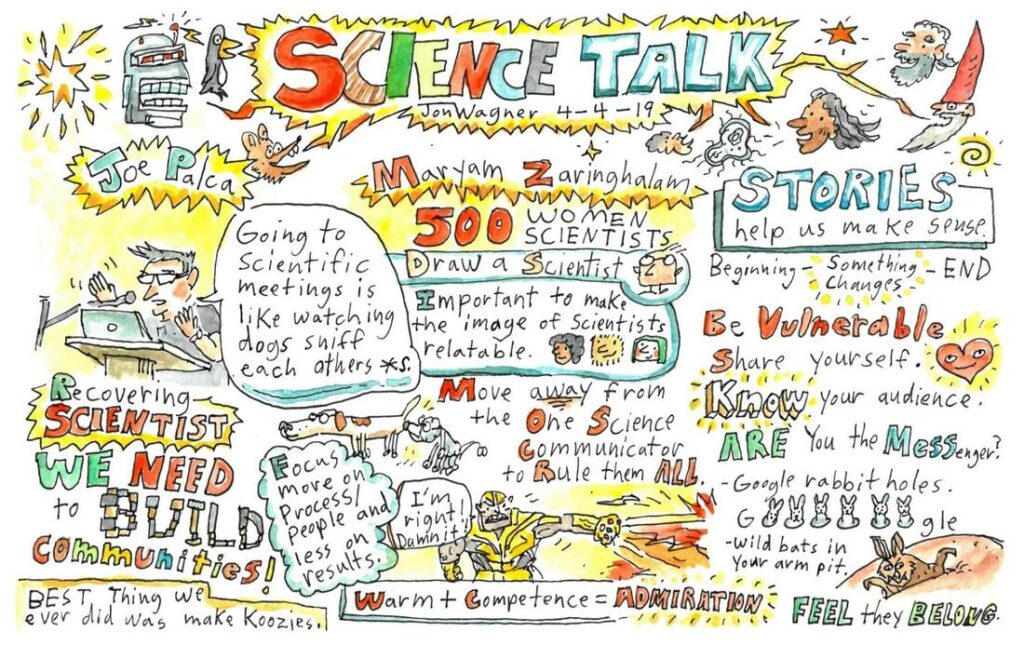
Science Talk began with Joe Palca, a science correspondent for NPR who introduced an important theme for the conference: building relationships. “We have to build relationships so that when we talk to people, they will listen to us.”
As science writer and biologist Maryam Zaringhalam explained, scientists often operate from what the science communication field calls the “knowledge deficit model.” For instance, scientists often assume that people who do not believe in global warming just don’t have enough information, but surveys of climate change skeptics tell us otherwise. Climate change deniers often have just as much factual knowledge as those who accept the human origins of global warming. The difference only appears when you ask them if they accept human-caused climate change. Their position is based on their identity, not their knowledge. It is as if you asked them “Are you a good conservative?” Denying climate change has become a part of their conservative identity.
This is why Joe Palca, and many others, emphasize relationships, not facts, as the force necessary to change opinions. Competence and warmth are the two most important factors in science communication.
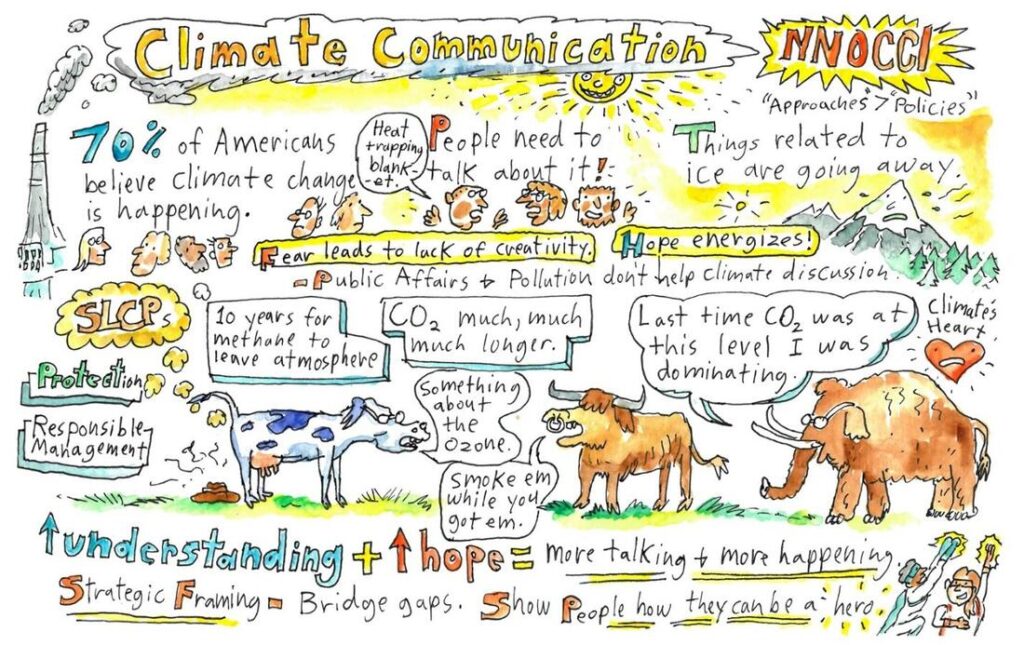
After breakout sessions and a networking lunch, there were a series of short presentations. Susanna Harris from UNC-Chapel Hill told us about her work forming a depression support group for Ph.D. students. Susanna is the founder of The PhDepression on Twitter and Instagram, and she described what it takes to form an online community:
(1) have a clear purpose you want to address, (2) find an online vehicle that is suited to your purpose, (3) expand to other vehicles slowly, (4) create community guidelines to make sure the members feel safe, (5) be sure that you want to be a long-term member of the community as you will be spending a lot of time there.
Later, Sarah Myhre spoke passionately about her experience as a female climate scientist and the need to speak out in the face of the forces that seek to silence our voices.
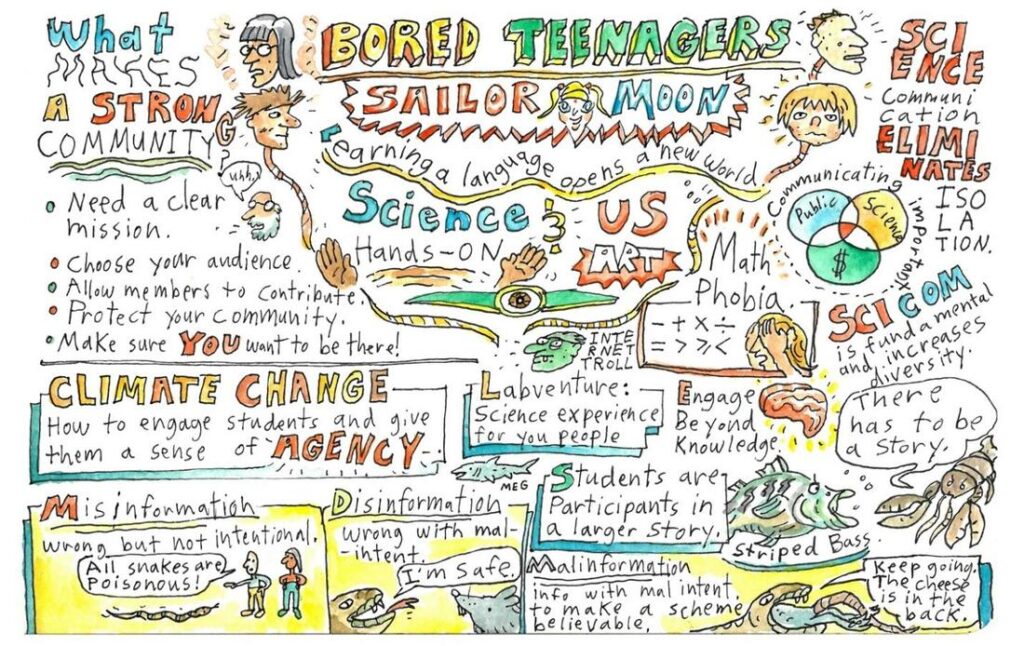
The poster session at the end of the day provided an opportunity to promote the work we do at the University Speaking Center in teaching good science communication. For the past two years Speaking Center faculty and I have offered scientific communication training in a variety of formats. At Science Talk, I advocated for a model of collaborative work between graduate schools, communication centers, and science faculty in order to train the next generation of scientists.
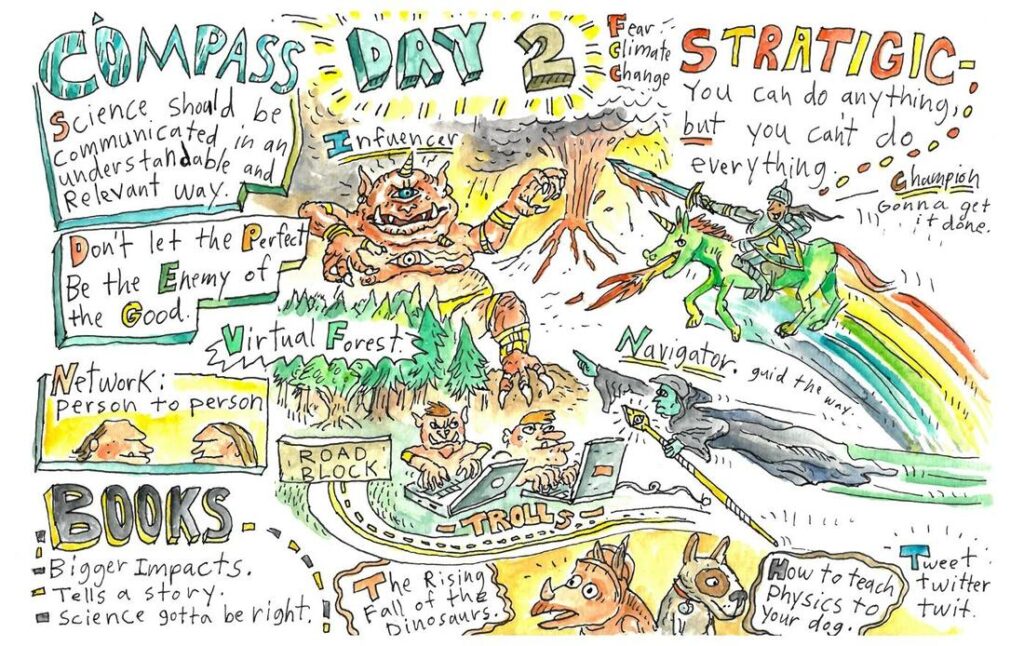
The second day began with break-out workshops. I met Jon, who was illustrating the conference with these fantastic drawings, at the workshop run by Compass. Compass is an organization that helps scientists learn to communicate to the public and decision makers. Their workshop led us through an exercise to articulate our goals as leaders in science communication.
I took this opportunity to formalize my goal of improving scientific communication by graduate students so that they will pass these skills on to their own students in the future. I also identified a number of potential champions of this approach, and formulated three immediate goals, which I am currently carrying out.
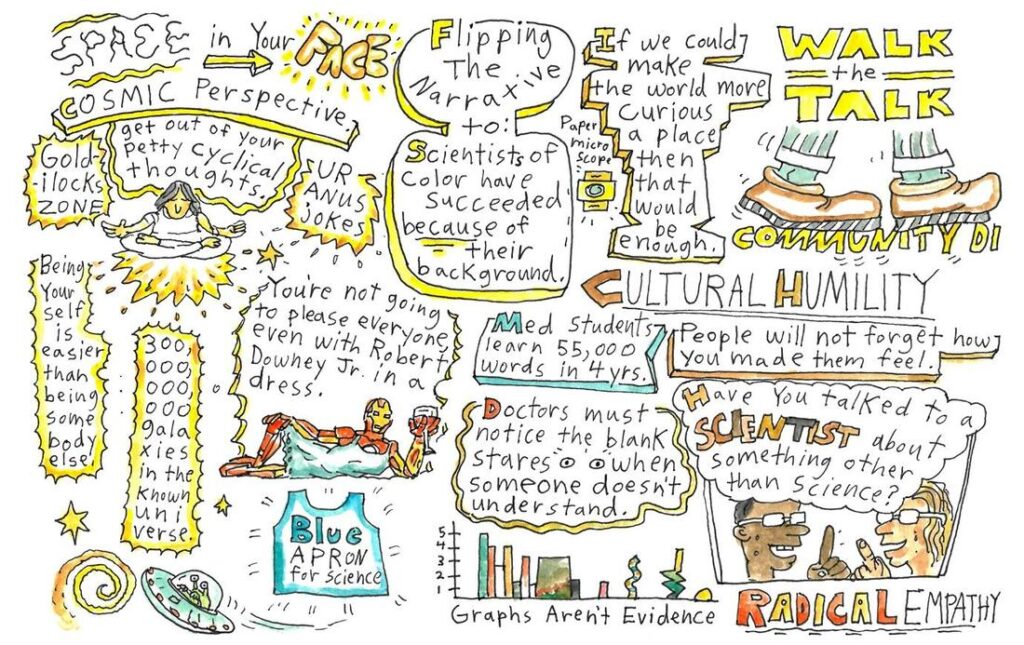
A series of short talks followed the coffee break: great science books, storytelling for science in Puerto Rico, Space in your Face (Google it), improving communication between doctors and patients, and the excellent work of the National Center for Science Education. Throughout the presentations, we heard again and again that the best way to communicate science is to be yourself and relate honestly to your audience. Data does not convince, but personal connections can.
The conference ended with a keynote presentation by YouTube’s Physics Girl, Dianna Cowern. Dianna gave an engaging, enthusiastic presentation punctuated by clips from some of her videos. Her message was that to create interest in science you need curiosity, novelty and excitement. Although her platform is YouTube, these principles apply to any type of science communication.
It encouraged me to know that one of her two most important influences was her high school science teacher, who was at Science Talk to see her presentation. Her other influence was our own Kiki Sanford, who has produced and hosted the podcast This Week in Science since 1999. We should never underestimate the difference we can make in peoples’ lives.
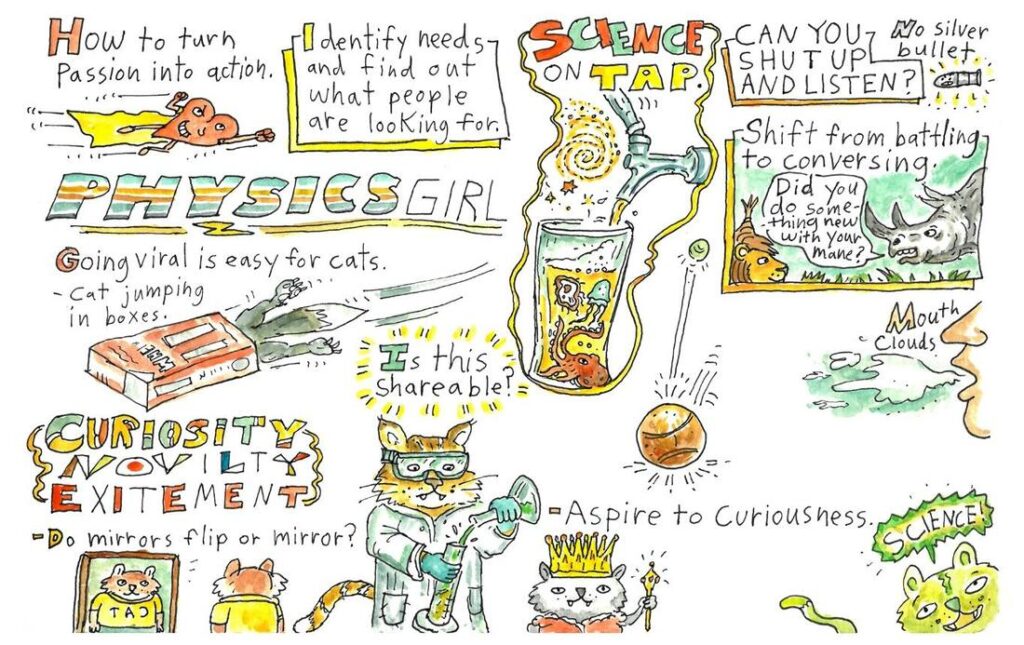
I will end with some goals for the future, as outlined by Jennifer Cutraro of the Kavli Foundation: As science communicators we need to focus on the needs of the communities we serve, not just ourselves; we need to help scientists see the value of scientific communication; and we need to work to make the Sci Comm community as diverse and inclusive as possible. The Science Talk community is taking important steps in all of these areas.
The dates for Science Talk 2024 have been set for April 11 – 12 in Portland, OR. Maybe I will see you there!



Leave a Reply